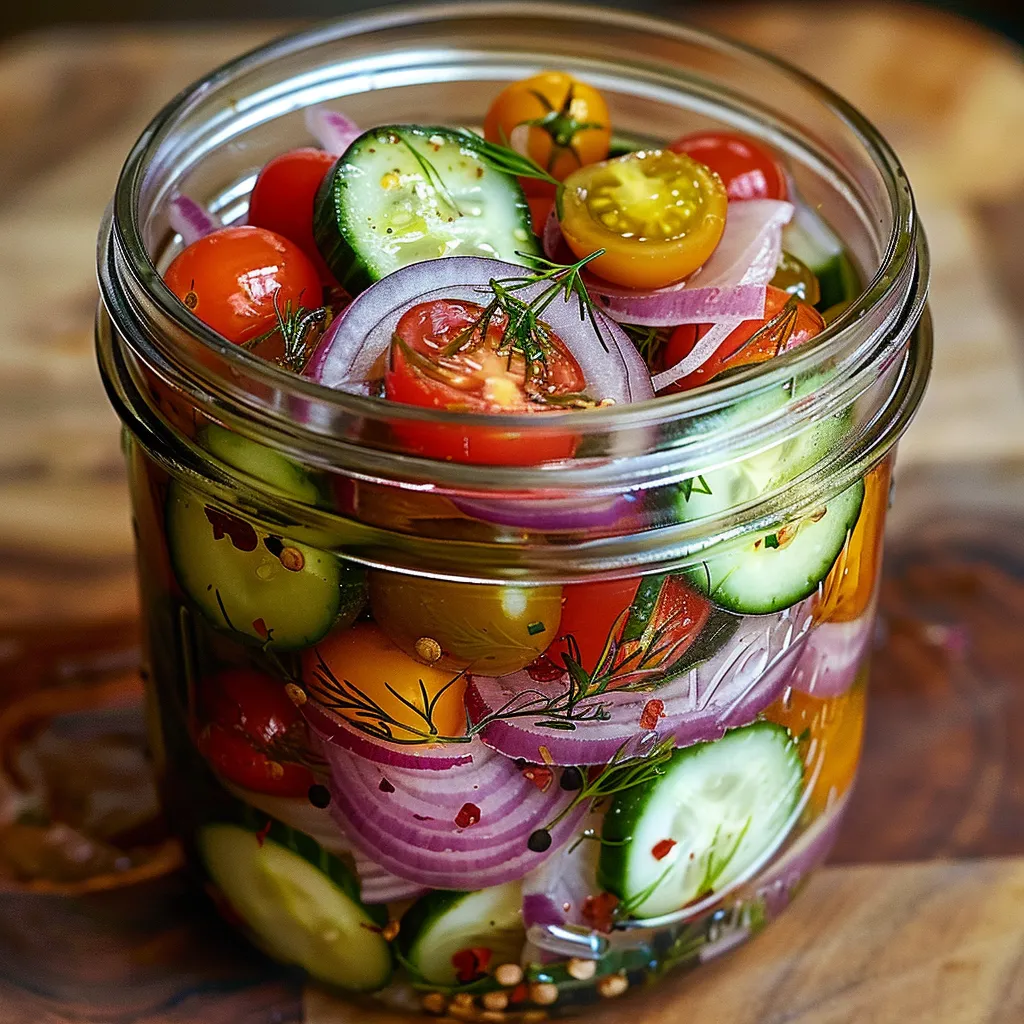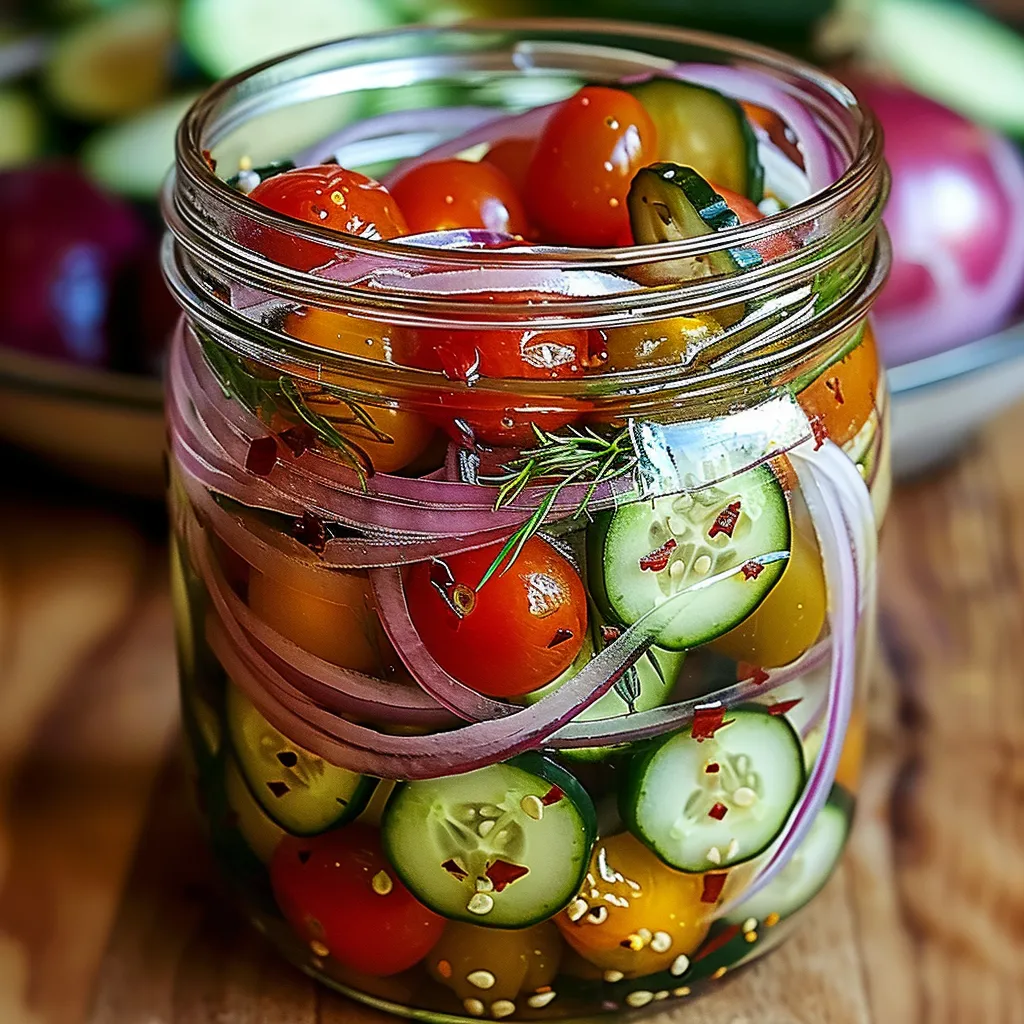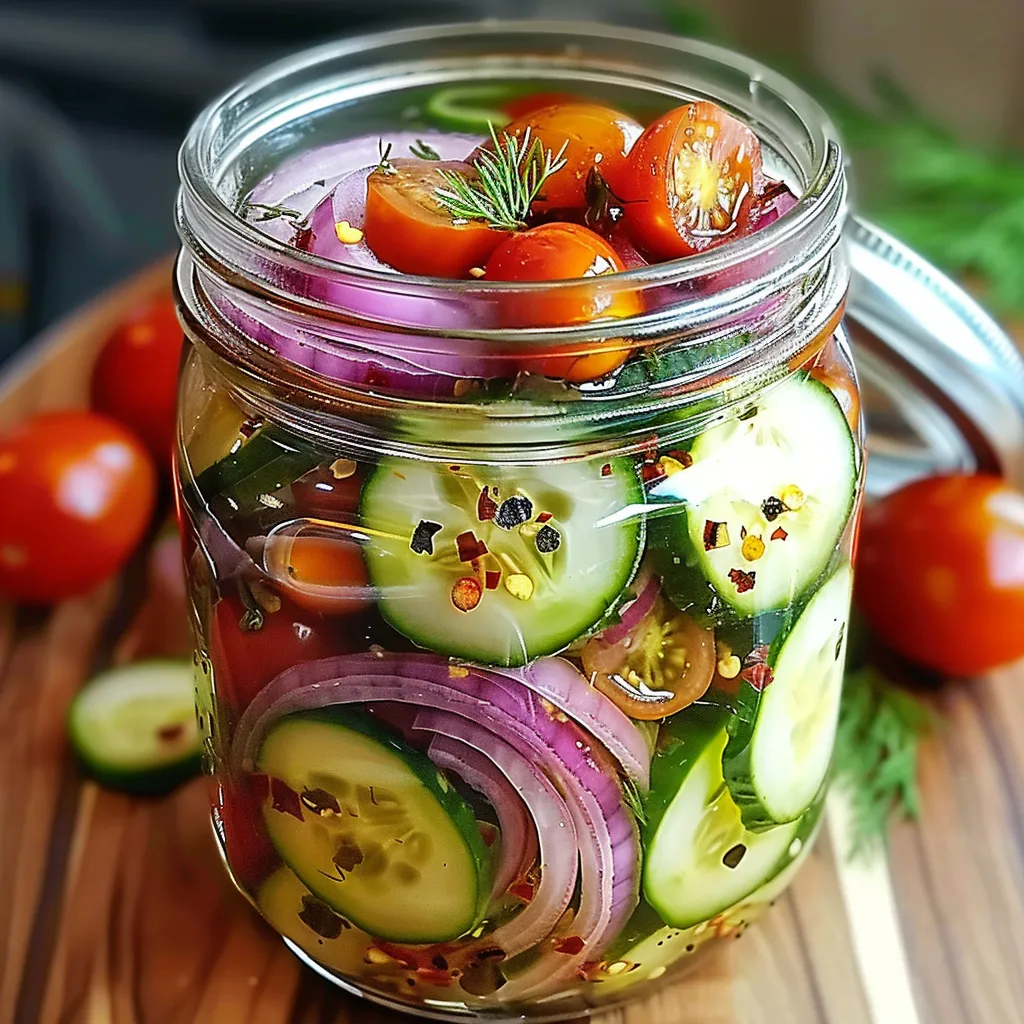 Pin it
Pin it
Vibrant cherry tomatoes, crisp cucumbers, and sharp red onions transform into a zesty, colorful pickle that brightens any dish. This quick pickle captures summer's bounty in a tangy brine, creating the perfect balance of acid, sweetness, and herbs. Each jar delivers a rainbow of textures and flavors, from the burst of tiny tomatoes to the crunch of cucumbers and the pleasant bite of red onions.
Last summer, these pickles became my secret weapon at barbecues. The moment I opened a jar, their aromatic vinegar-herb fragrance would draw people to the table, and guests would beg for the recipe.
Essential Ingredients and Selection Tips
- Cherry Tomatoes: Choose firm, ripe tomatoes with no blemishes. Through testing countless varieties, I've found that a mix of colors creates the most beautiful jar
- English Cucumbers: Their thin skin and fewer seeds make them ideal for pickling. After experimenting with various types, I've learned that regular cucumbers can become too soft
- Red Onions: Select firm, heavy onions with tight, crisp skin. I always choose smaller onions as they tend to have a milder, sweeter flavor
- Fresh Dill: Look for bright green, feathery fronds without any yellowing. The stems near the base should be firm and fragrant
 Pin it
Pin it
The quality of your vinegar makes a huge difference. Last month, I switched to a premium white vinegar, and the clarity of flavor was remarkable.
Detailed Cooking Instructions
- Brine Preparation:
- Begin by combining vinegar, water, sugar, and salt in a saucepan. Heat until just boiling, stirring to dissolve the sugar completely. Add dried oregano and red pepper flakes if using. This hot brine will slightly soften the vegetables while maintaining their crunch.
- Vegetable Processing:
- While the brine heats, prepare your vegetables. Slice onions paper-thin using a sharp knife or mandoline - consistent thickness ensures even pickling. Halve cherry tomatoes if they're large. For cucumbers, create thin, uniform slices about 1/8-inch thick.
- Jar Packing:
- Layer your vegetables in clean jars, alternating for visual appeal. Pack them tightly but don't crush them. Leave about 1/2 inch of headspace at the top. Tuck fresh dill sprigs between the layers rather than adding all at once.
- Pickling Process:
- Pour the hot brine over your vegetables while it's still very hot. Use a chopstick or knife to remove any air bubbles. Ensure all vegetables are fully submerged - this is crucial for proper pickling.
Working in a restaurant taught me that slightly underfilling jars prevents vegetables from floating above the brine level.
Temperature Control
Let pickles cool to room temperature naturally before refrigerating. This gradual cooling helps maintain texture while ensuring food safety.
Storage Strategy
These pickles keep for up to two weeks when properly refrigerated. The flavors peak after about 24 hours but continue developing.
Serving Versatility
Use these pickles to brighten sandwiches, tacos, or grain bowls. They're perfect for charcuterie boards or as a zesty side dish.
Creative Applications
Save the pickling liquid to add a bright punch to salad dressings or marinades. A splash can transform ordinary vinaigrettes.
Final Thoughts: These quick pickles represent everything I love about preserving - capturing fresh ingredients at their peak while transforming them into something new and exciting. Through countless batches, I've learned that success lies in respecting each vegetable's unique characteristics while maintaining proper technique. Whether served at a summer barbecue or enjoyed as a midnight snack, they bring brightness and crunch to any meal.
 Pin it
Pin it
Frequently Asked Questions
- → How long do these pickled vegetables last?
- These quick pickles will last up to 2 weeks when stored in an airtight container in the refrigerator.
- → Can I adjust the spice level?
- Yes, you can increase or decrease the amount of red pepper flakes, or omit them entirely, based on your spice preference.
- → Why did my cherry tomatoes split?
- If tomatoes split, it's likely because the brine was too hot when poured over. Let it cool slightly before adding to prevent splitting.
- → Can I use different vegetables?
- Yes, this brine works well with many vegetables like carrots, bell peppers, or cauliflower. Just ensure they're cut to similar sizes.
- → Can I reduce the sugar content?
- Yes, you can reduce or omit the sugar, though it helps balance the acidity of the vinegar. Start with less and adjust to taste.
